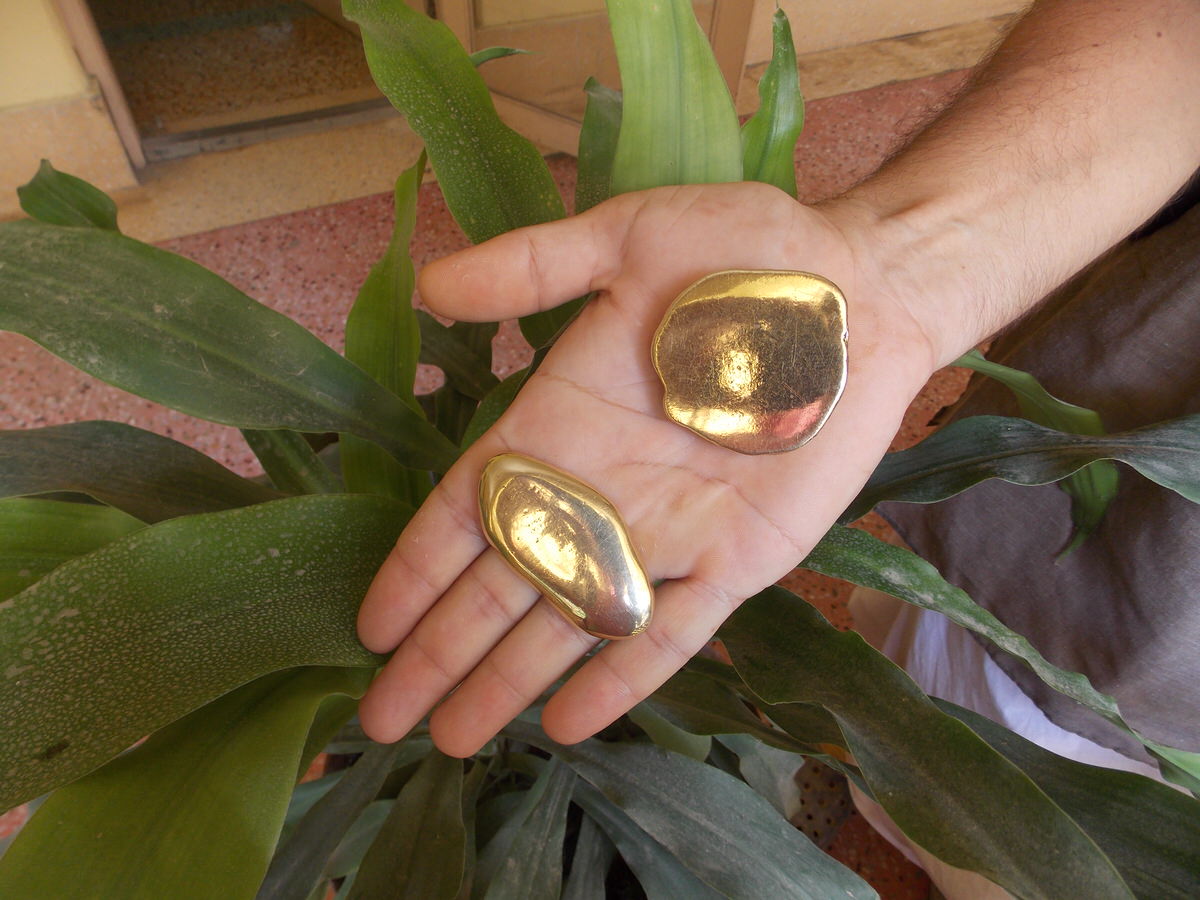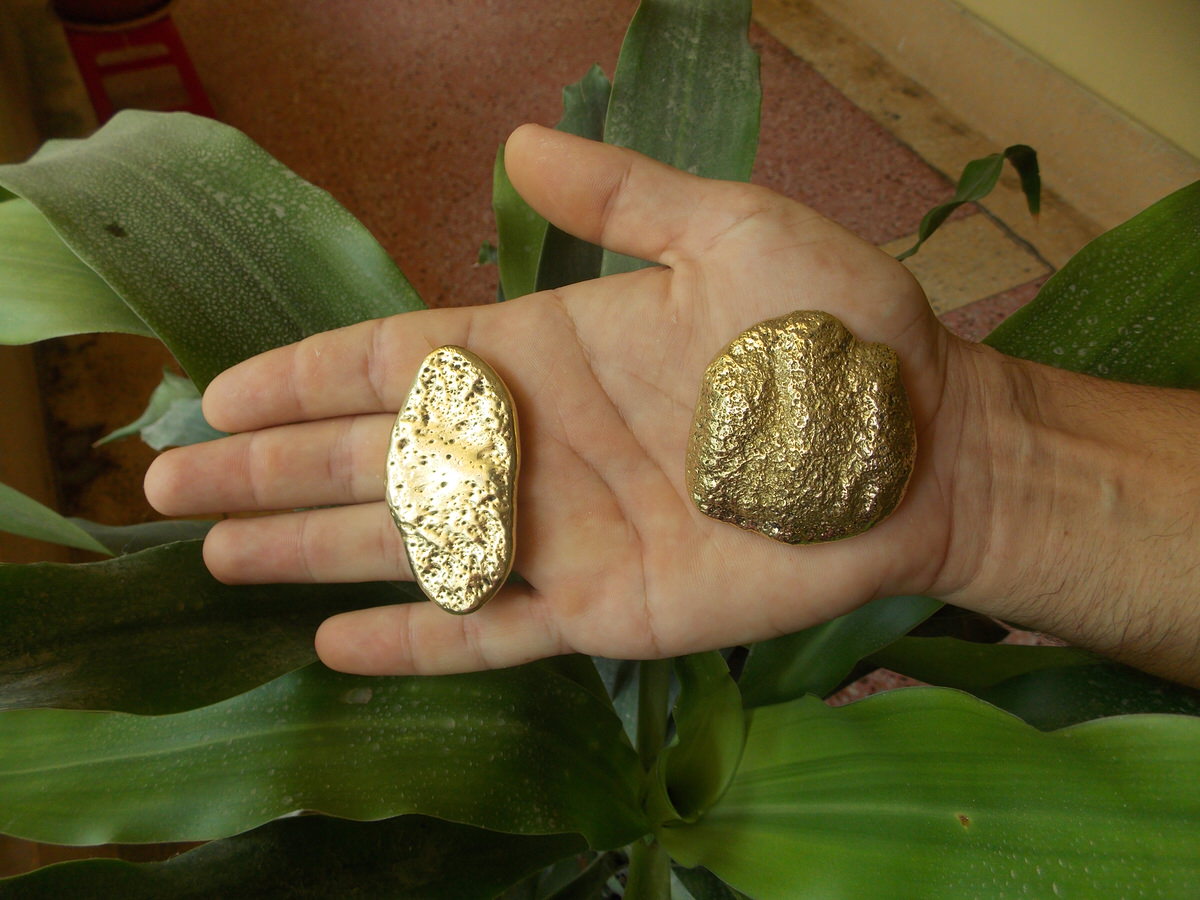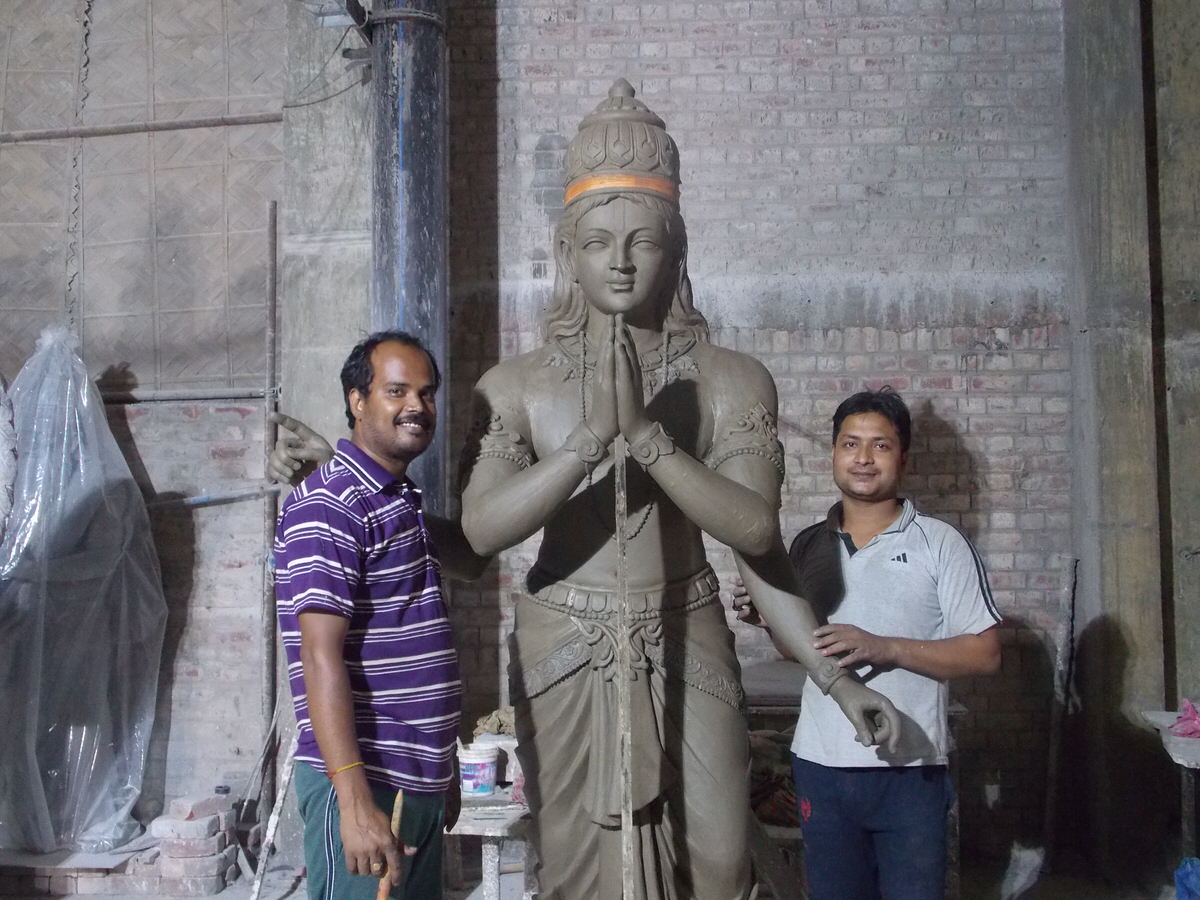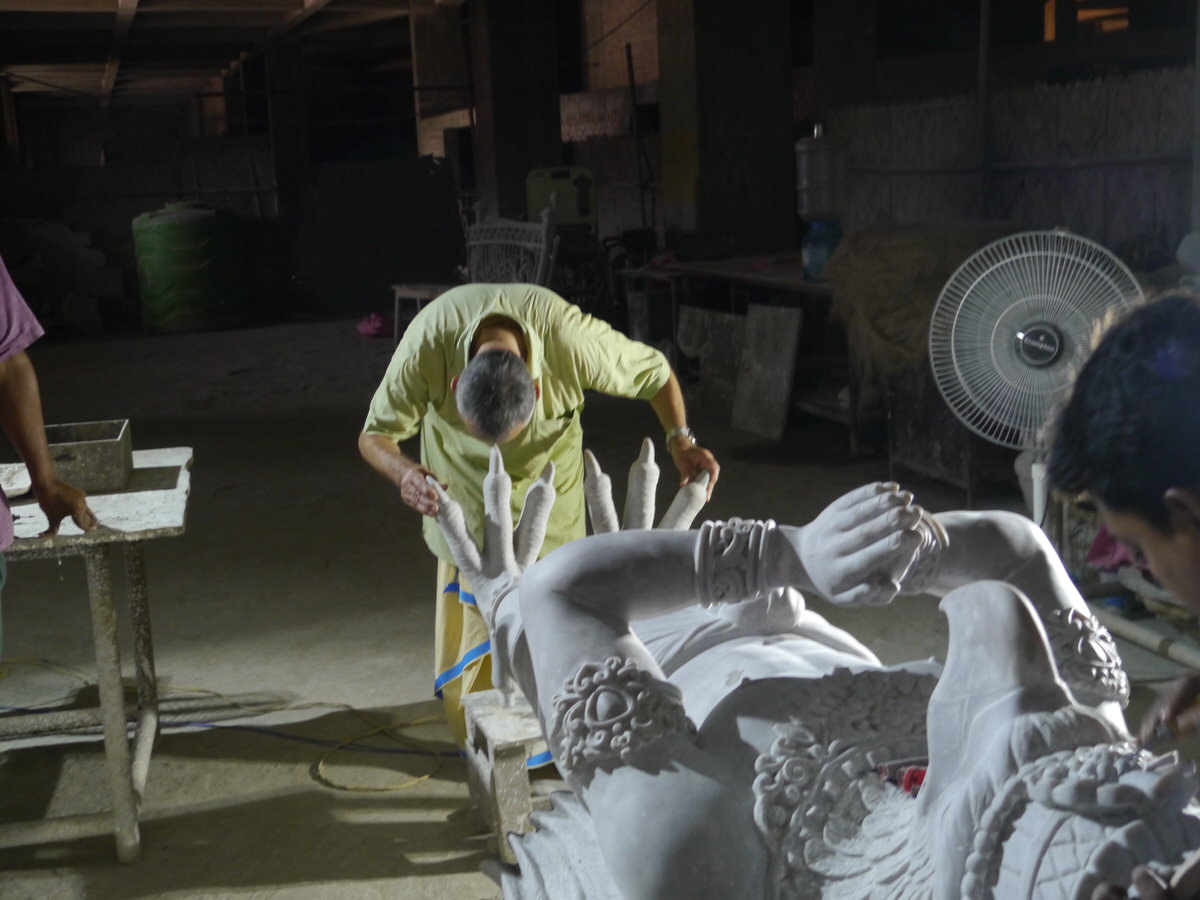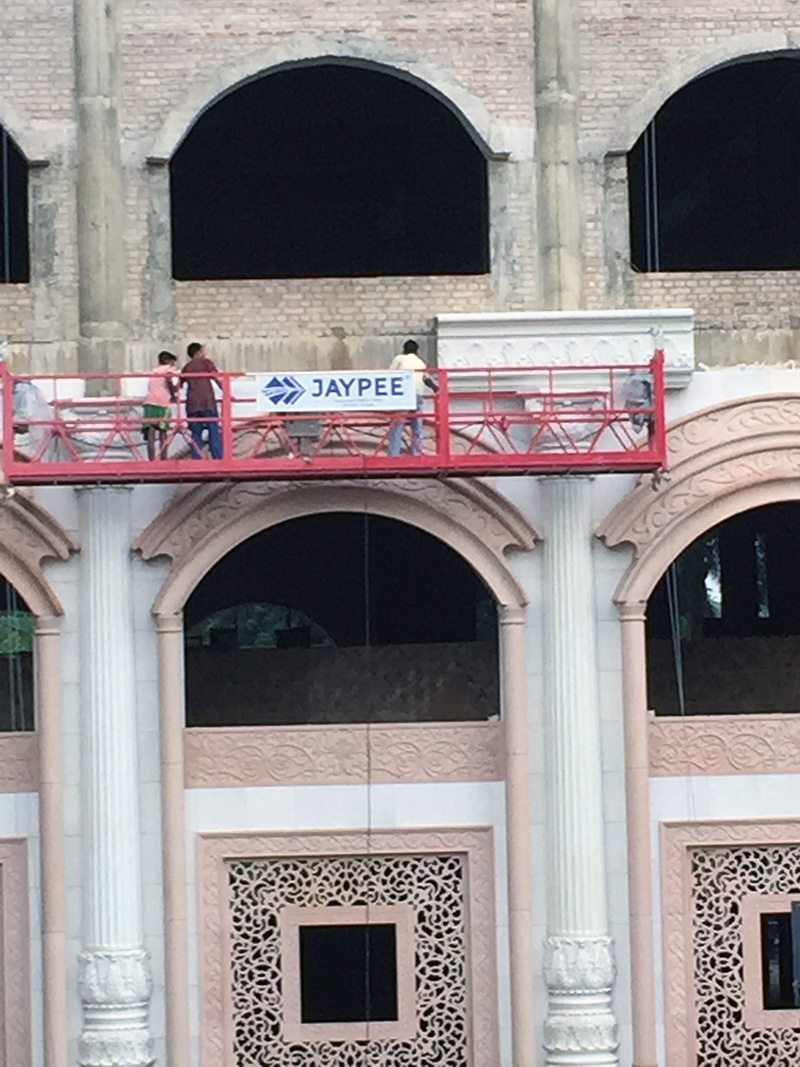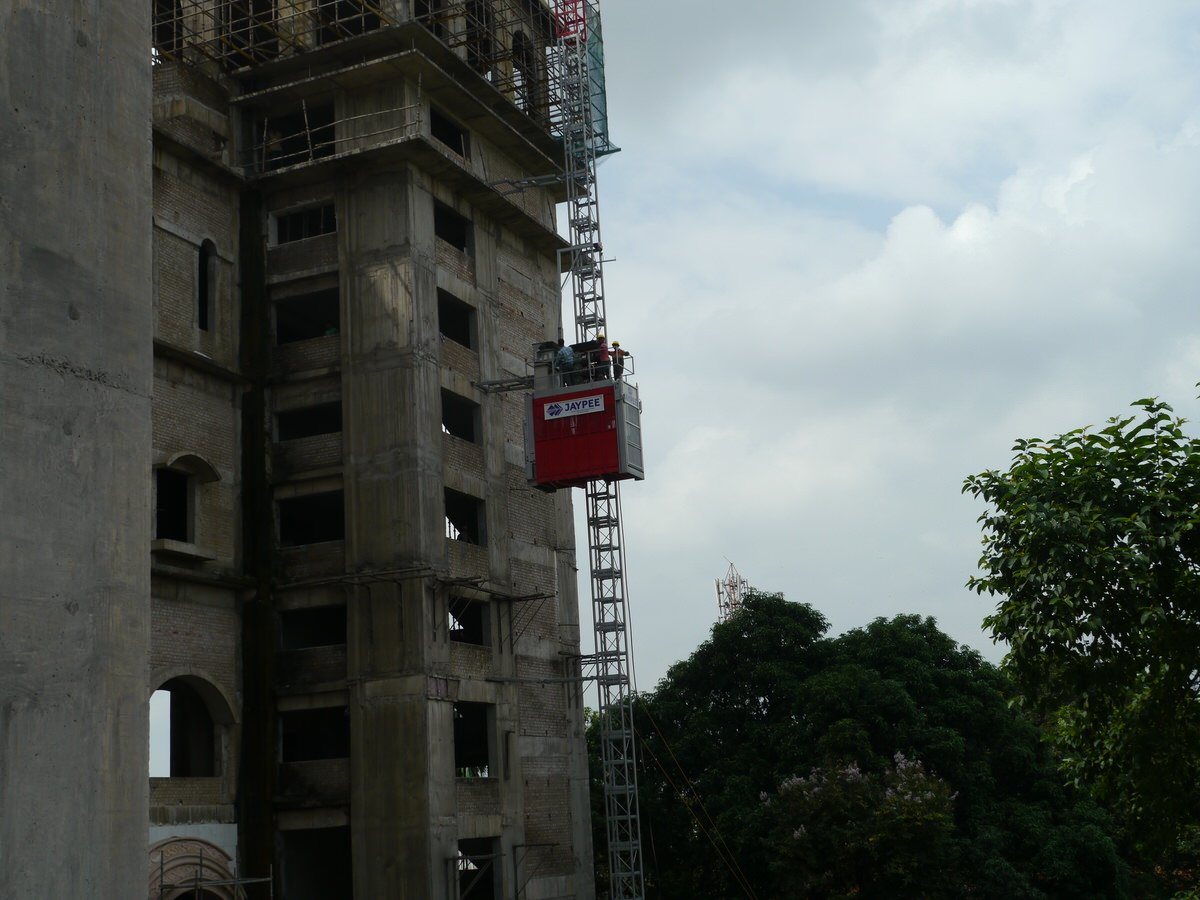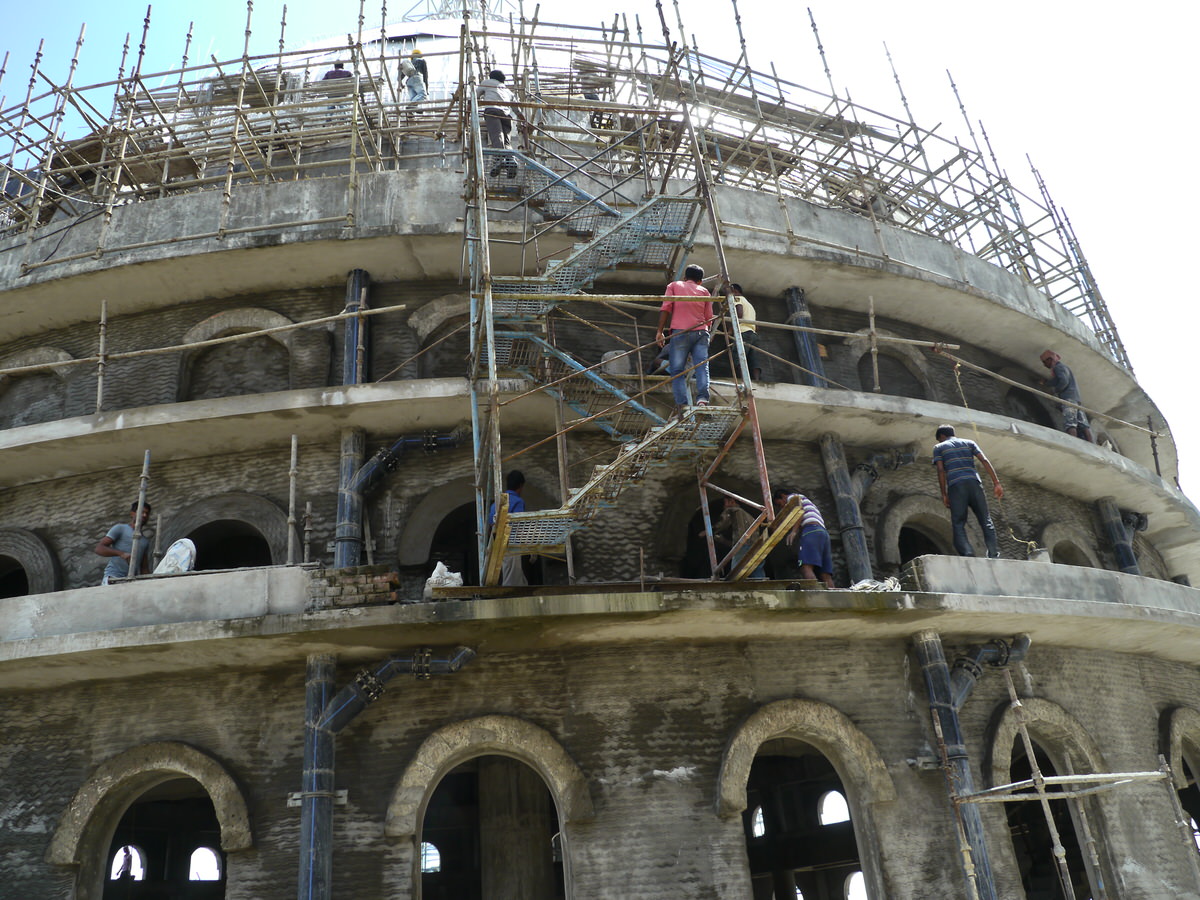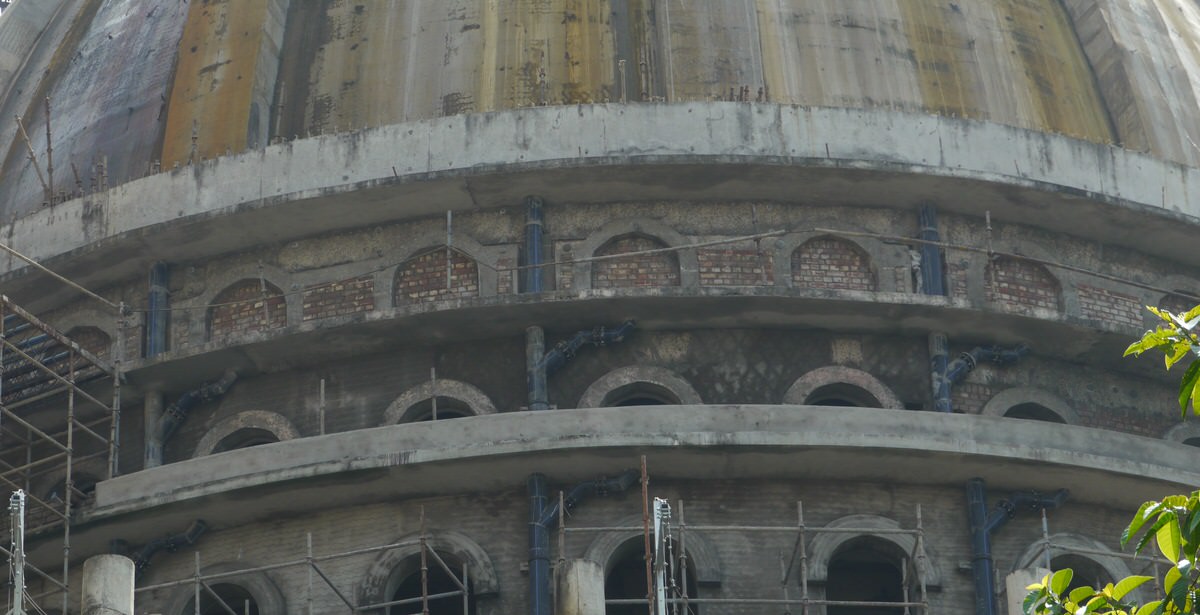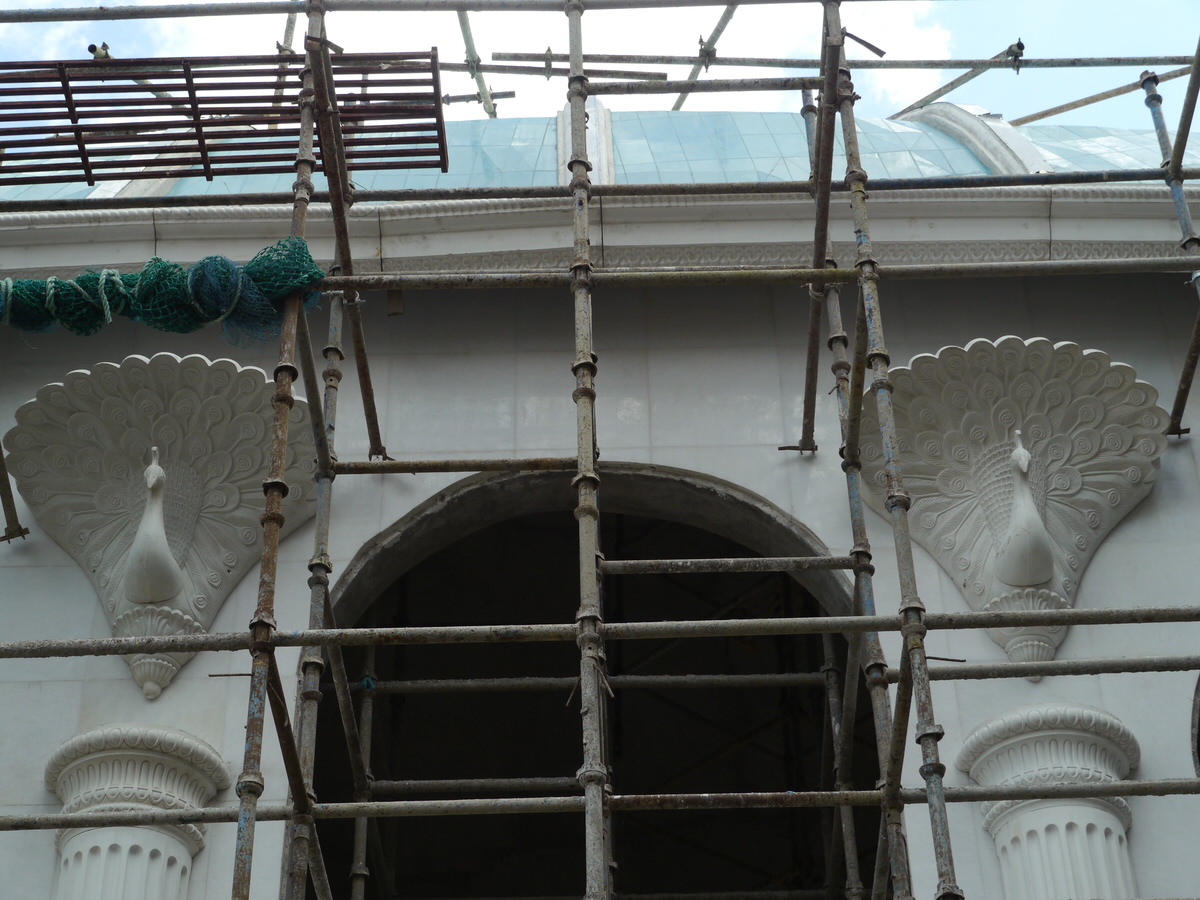The post Srila Prabhupada said “Everything inconveniences me. Its all right” appeared first on SivaramaSwami.com.
Srila Prabhupada said “Everything inconveniences me. Its all right”
How do we balance between respecting followers of all religions and acknowledging the violence that some of them do?
→ The Spiritual Scientist
Rare and beautiful photo of Srila Prabhupada.Srila Prabhupada…
→ Dandavats

Rare and beautiful photo of Srila Prabhupada.
Srila Prabhupada taught:
nama-cintamaṇe krsna
caitanya-rasa-vigraha
purnna suddha nitya mukta-
bhinnatman karunnamaya
TRANSLATION
1) O Lord whose holy name is a cintamani jewel! O All-attractive Lord Krsna whose form is spiritual nectar! You are Perfect and pure Lord, Eternal Lord! Liberated Lord! Lord not different from Your holy name! Merciful Lord!
To read the rest of this beautiful transcendental Krsna Namavali Stotram poem: https://goo.gl/X2d6H0
Devotees from ISKCON Auckland, NZ, distribute the Holy Name,…
→ Dandavats

Devotees from ISKCON Auckland, NZ, distribute the Holy Name, Srila Prabhupada’s books and …serious prasadam! The perfect program!(Album with photos)
Srila Prabhupada: “If one only chants, with some slight faith, the holy names of Lord Caitanya and Nityananda, then very quickly he is cleansed of all offences. Thus as soon as he chants the Hare Krishna maha-mantra, he feels the ecstasy of love for God.” (Caitanya-caritamrta, Adi-lila, 8.31)
Find them here: https://goo.gl/J2uIQj
Vyasa puja offering 2016 for HH Devamrita Swami Maharaja
→ simple thoughts
Dear Guru Maharaja
Please accept my humble obeisance
All glories to Srila Prabhupada
All glories to your steadfastness in seva to your beloved Guru Maharaja
Each and every day I wake up surprised, surprised that one remembers Sri Krishna and have another opportunity to connect by chanting and sharing the holy names.
I sat today and read the following verse:
mūkam karoti vācālamṁ pangumṁ langhayate girim yat-krpā tam ahamṁ vande śrī-guruṁ dīna-tāranam
By the mercy of the guru, even a dumb man can become the greatest orator, and even a lame man can cross mountains. As advised by Lord Brahmā, one should remember this śāstric injunction if one desires success in his life.
It reminded me that by the mercy of Guru one can achieve the unachievable, if one simply follows the instructions carefully.
I still remember clearly the challenge you gave me so many years ago, it’s so clear as if you only just had spoken it even though many years have passed.
We see in your own example you remain firm in your own determination to fulfil the wish of your own Guru Maharaja to spread the love and happiness of pure bhakti of real knowledge and understanding of the power of chanting the holy names of Sri Krishna; but more to understand the pastimes and how we can learn so much from them.
So today on your appearance day I am reminded of how extra ordinary your life is as you have given the perfect example of dedicating it in service, to save even one like me from the clutches of material nature.
And pray that somehow ones own appreciation can grow and somehow follow in your great example
Yours Humble
Dhirabhakta Das
Video from devotees chanting in Tel Aviv, Israel, goes viral and…
→ Dandavats

Video from devotees chanting in Tel Aviv, Israel, goes viral and gets more than 1 million 300 thousand views (6 min video)
Sril...
Diplomats and Academics Show Support for ISKCON at European 50th…
→ Dandavats

Diplomats and Academics Show Support for ISKCON at European 50th Anniversary Event.
During Europe’s main official event celebrating ISKCON’s 50th Anniversary and Srila Prabhupada’s achievements, diplomats, academics and religious and human rights advocates showed their support for an increasingly respected Hare Krishna Movement.
The European event follows similarly prestigious 50th anniversary celebrations around the world, including one attended by former UK Prime Minister David Cameron at Bhaktivedanta Manor; a Washington D.C. gala celebration attended by US congresswoman Tulsi Gabbard; and a mega event in Kolkata with West Bengal Governor Shri Keshari Nath Tripathi.
Around 200 people attended the European event at the prestigious Bozar Centre for Fine Arts in Brussels on Tuesday September 27th.
To read the entire article click here: https://goo.gl/o7Sxuk
Devotees chant Hare Krishna at the Italian parliament in Rome…
→ Dandavats

Devotees chant Hare Krishna at the Italian parliament in Rome for the 50th anniversary of ISKCON (8 min video)
Srila Prabhupada...
The Walking Monk Comes to Whitehorse.
Finding peace and making…
→ Dandavats

The Walking Monk Comes to Whitehorse.
Finding peace and making friends one step at a time.
Selene Vakharia: I am on the phone with Bhaktimarga Swami, a 63-year-old monk in Toronto. We are talking about the visit to Whitehorse he has planned for late September.
Better known as The Walking Monk, at 63 he has already walked across Canada four times, as well as across the United States, Ireland, Israel, Fiji Islands, Mauritius, Trinidad and Guyana.
He walks as a way to meditate and to slow down. He uses mantras – repetitive phrases with spiritual meaning – when he walks, to instill introspection and mindfulness into his treks.
During his cross-country walks, he often walks eight hours and 33 km a day. One day along the Saint Lawrence River in Quebec, he walked over 90 km.
“When you’re walking, you take some time,” says Bhaktimarga Swami. “It’s introspective walking, meaning you do some meditation when walking.”
Bhaktimarga Swami believes in the power of walking for health and for community. He sees walking as an act that takes us away from our technological devices and puts us into contact with our neighbours.
He refers to his long walking expeditions as “friend-raising” for their ability to introduce him to new people. The marathon walks are a traditional monastic practice that is about inspiring and being inspired by those who come into your path. Like everything that Bhaktimarga Swami does, the walks are meant to “share the joy of life and that’s what you want to give out.”
“What makes walking so nice,” he says, “is you’re doing something physically while also doing something on the spiritual side.”
Through the relationships built with others and through the physical benefits, Bhaktimarga Swami finds that the walks keep him in prime condition to take care of and serve others.
“Many issues are overcome by walking because you allow the time to process thoughts, plans and dreams. Introspective or mindful trekking is like therapy.”
In 1973, at the age of 21, he joined the monastic lifestyle. Bhaktimarga Swami always had a spiritual inclination. He visited an ashram in Montreal, settled at one in Toronto, and found the whole lifestyle came easily and naturally. The whole practice for him “ignited that spark from previous existence.”
Bhaktimarga Swami is a practitioner of Bhakti Yoga – a spiritual practice focused on the cultivation of love and devotion. Within Bhakti Yoga, everything is done in devotion and in gratitude – everything is done from the heart, says Bhaktimarga Swami. He extends this practice to his walking, to daily life, and even to the work he is currently doing on a friend’s tomato farm.
“Whatever you’re doing,” he says, “when you redirect it, channel it more, whatever you’re doing is an offering to the divine… it changes your mindset. You begin to appreciate your work.”
He dubs this mindset an “attitude of gratitude” and credits it with bringing joy into the everyday, no matter what it brings his way – chores, work, and even walking.
Having had a longstanding desire to visit the North, Bhaktimarga Swami says he is excited to visit and walk in Whitehorse. He is looking forward to meeting the community and sharing his experiences and lessons on meditative walking. While in town, he will be leading workshops and the mantra meditation at the free weekly Sunday kirtan and vegetarian feast at the United Church, on the end of Main Street in downtown Whitehorse.
Source: https://goo.gl/zwHmpY
Traveling Monk 2016-10-07 08:19:00
→ Traveling Monk

Здоровье мое в теплом климате и духовной атмосфере Шри Вриндаван-дхамы идет на поправку. Правда, вчера вечером приуныл: я здесь, а Бада Харидас прабху с командой проповедуют в Монголии. Зато мне приснился удивительнейший сон. Мне снилось, что я с группой преданных сижу перед Шрилой Прабхупадой, а он собирается давать даршан в каком-то храме. Не спеша оглядев аудиторию и заметив меня, Шрила Прабхупада говорит:
– А, Индрадьюмна Свами. Я знаю, ты поклоняешься Господу Нрисимхадеву и нескольким шалаграма-шилам. Как там пуджа?
Удивленный его вниманием, я секунду помедлил, чтобы собраться, и говорю:
– Очень хорошо, Шрила Прабхупада. Спасибо.
– А твоя джапа? – продолжает он с интересом.
– Отлично, Шрила Прабхупада, по вашей милости, – отвечаю я.
– А служение? – спрашивает он.
– Я прервался ненадолго, – отвечаю я робко.
– Знаю. Понимаю, – говорит он.
– Шрила Прабхупада, – спрашиваю, – откуда это вы знаете?
Чуть помолчав, он улыбнулся и затем с любовью так говорит:
– Я за тобой приглядываю.
Exploring Varnasrama – Gita Nagari Labor Day Weekend Retreat 2016
→ Dandavats
 By Romapada Swami
By Romapada SwamiAmish - A demonstration of a different social order sustaining over time in modern America and Canada. Oh My God - We are going to talk about Varnasrama! Did Srila Prabhupada want Varnasrama and what did he mean by it. "American Vedic". Why devotees need to adopt it and the first steps to do so. Paroxysms Paralaxes and Paradoxes. A strategy for Varnasrama connected to the NYC Harinama Asrama. Speakers and participants: HH Romapada Swami, HH Sivarama Swami, HH Jayadvaita Swami, HH Devamrita Swami, HG Abhirama Prabhu, HG Pancaratna Prabhu, HG Vraj Vihari Prabhu and others
Continue reading "Exploring Varnasrama – Gita Nagari Labor Day Weekend Retreat 2016
→ Dandavats"
ISKCON 50 Meditations: October 7, 2016
→ ISKCON News
Should I Meditate?
→ The Enquirer
After a class on Chapter Six of the Gita (which is all about meditation), someone asked…
Q: Besides a few poor attemps, I haven’t really started meditating. I am kind of unsure if and how to begin. I wouldn’t say that I am already very advanced on my karma-yoga path. So, should I try to start on meditation at an beginner-level right now or do I need to wait until I reached a higher step on karma-yoga?
You should focus on your actions. Focus on making your actions more beneficial to others, and less motivated by a desire to separately benefit yourself. Dedicate yourself more fully to the service of others.
You won’t be able to succeed in this, however, without wisdom and knowledge about who you are and why typical selfishness isn’t really your own best interest. This is why, prior to discussing karma-yoga, Krishna first gives an initial seed of jñāna in 2.12-30. Only after we comprehend who and what we really are, and what our relationship to the world is, only then can we see that separatist selfishness isn’t really relevant to us, isn’t really our true best interest. And only then can we seriously pursue karma-yoga, which is the dedication of our energy and action to benefiting others.
You will also notice that Krishna’s discussion of karma-yoga mainly spans chapters 3 through 5, and that as it moves from three to five it becomes progressively more philosophical, and regularly refers back to the need of having jñāna to be able to do karma-yoga. In fact one of the most strongly stated and often repeated points Krishna makes in the first third of the Gītā is that knowledge (jñāna) and right-action (karma) are two inseparable parts of a single endeavor for spiritual evolution.
So although you ashould focus on your actions, this doesn’t mean that you should ignore the cultivation of knowledge. If you ignore the cultivation of knowledge you will not be abe to continually decrease the selfishness in your actions, and thus you will not be able to succeed in karma-yoga. So, even a person who does karma-yoga must devote some significant time to study and meditation.
When karma-yoga becomes very mature, the impulse to be active goes away. Then one can devote most of one’s time to study and meditation. That is when one crosses into being a jñana-yogī. As Krishna explains at the beginning of Chapter Six (3rd text), jñāna-yoga is not a different path from karma-yoga, they are actually a beginning and advanced way of doing the same yoga. Jñāna-yoga is simply the more advanced form of karma-yoga, and only a person who has really graduated from karma-yoga can successfully apply themselves to jñāna-yoga.
In jñāna-yoga meditation is the primary activity. In karma-yoga duty is the primary activity, but this does not mean duty/action is absent from jñāna yoga, or that meditation is absent from karma-yoga.
Meditation should be done by everyone, but not everyone should expect to do it for long stretches of time day after day – that is for jñāna-yoga.
Pātāñjalī reccomends mantra meditation the most highly. Mantra is a set of words that encapsulates deep knowledge, which becomes revealed to a person who carefully contemplates the words (“meditates” on the words). So, every yogi, even the beginner karma-yogi should practice at least a few minutes of mantra-meditation every day.
It should be done as advised in Chapter Six, not while riding a train or bike, or walking around doing housework. It should be done in a peaceful place, seated properly, breathing deliberatly, and with a mind clearly focused on the words of the mantra, allowing their meanings to unfold through the meditation.
The mantra should not be a mundane mantra, since Krishna defines in chapter six that the purpose of meditation is to redirect the flow of thoughts so that they can contemplate consciousness itself, rather than only flowing towards the objects of consciousness. So the mantra should be a verbal form of advaya-jñana (the absolute consciousness). There are many suitable mantras, and different specific schools prescribe different mantra to their students.
In the Gauḍīya school we especially prescribe mantra of Bhagavān Śrī Krishna, such as the gopāl and kāmadeva mantra. We also highly reccomend meditation upon the hare krishna mahāmantra. Everyone in the Gauḍīya school should meditate on these mantra even if they are beginners – though naturally the advanced students will meditate on them much more deeply and abundantly. Still we should all spend a few minutes every day at least in really careful and deep meditation on them.
We should undertake the study of the texts that explain the concepts encapsulated in the mantra. This is an extension of the meditation.
With this study and contemplation/meditation of activities proceed quickly to become purified and we progress towards uttama-bhakti yoga.
Vraja Kishor www.vrajakishor.com
Tagged: Mantra, Mantra Meditation, mantra-japa, Meditation
Sri Vyasa-puja Ceremony, October 1, Radha-Kalachandji Temple, Dallas
Giriraj Swami
 Giriraj Swami’s Vyasa-puja celebration was a festive opportunity for the devotees to chant, dance, feast and glorify Lord Krishna’s devotees.
Giriraj Swami’s Vyasa-puja celebration was a festive opportunity for the devotees to chant, dance, feast and glorify Lord Krishna’s devotees.
“My experience with His Holiness Giriraj Swami is that he is a clear representative, or as Srila Prabhupada said, a transparent via medium. So, through Giriraj Swami we see our Founder Acharya His Divine Grace A. C. Bhaktivedanta Swami Prabhupada. This quality of Giriraj Swami is very important to me because ISKCON is a growing society that has to prevail for a long time. That depends on the clarity with which we see Srila Prabhupada’s vision for what ISKCON should be which in turn depends on the clarity of vision the senior devotees have. From my daily exchanges with Giriraj Swami I find he has a strong desire to understand exactly what is being said and meant by Srila Prabhupada.” — Rtadhvaja Swami















 ——————————
——————————
Many thanks to Bhismadeva dasa for the beautiful photos.
The speakers in part 1 are:
Nityananda dasa, Rtadhvaja Swami, Cakri dasa, Sucharya dasi, Visvambara dasa, Radhanatha dasa, Shyamasundara dasa, Apurva dasa, Guru Bhakti dasi, Mahahari dasa, Syamavali dasi, Radha Krishna dasa, Children from TKG Academy, Guru Priya dasi, Rasikendra dasa, Dhruva dasa, Devaprastha dasa, Arjuna Krishna dasa, Visakha Priya dasi, Vinod Bihari dasa, Nila Madhava dasa & Madhuri Radha dasi, Svapna Vilasa dasi, Ananda Lila dasi, Visnupriya dasi
Part 2
Gandharvika, Abhay Charan, Hemangi dasi, Jaya Sri Radhe dasi, Lily and Art Garcia, Arduan, Ananda Lila dasi, Vrnda Priya dasi, Indulekha dasi, Patita Pavana dasa, Varshana Rani dasi, Vijaya Bhattaru, Himanshu Tambe, Snigdha Tambe, Aashish Pandya, Dehuti Pandya, Ashesha, Gaura Hari dasa, Maria Caldwell, Gopi Gita dasi
To download, right click and choose ‘Save As’.
Vyasa-puja offerings part 1
Vyasa-puja offerings part 2
Vyasa-puja talk by Giriraj Swami
Forgiveness and letting go…
→ KKSBlog
(Kadamba Kanana Swami, 05 June 2016, Radhadesh, Belgium, Caitanya Caritamrta Madhya 25.57)
Question: How do we survive exploitation and abuse and at the same time not become an impersonalist who just renounces everything? We also need to continue to have a soft-heart in order to love Krsna.
Abuse is very disgusting. As I said earlier, yayedaà dhäryate jagat (Bhagavad-gita 7.5), exploitation exists among living beings in this world. It becomes even more distasteful when such exploitive mentality enters into the relationship between devotees but at the same time it can be expected that it will exist. It is inevitable because we bring it with us in our hand luggage, as part of our material conditioning. Our contamination does not go away. So in that sense, we must learn to forgive. One feature of renunciation which every vaisnava has to renounce is a sense of anger, a sense of, “I am the victim.” When there is abuse, there are two parties – there is the abuser and there is the victim. Many of us are professional victims, living a life in the conviction of, “I have been abused.” But how can we rise above that trap? How can we get out of that cage, the I-am-a-victim cage that locks us up for years? The cage that will not allow us to be free and to enjoy at Krsna’s lotus feet, in past times and in service to him? How can we get rid of that victim mentality? ONLY FORGIVENESS CAN DO IT.
To forgive, we have to be very generous and see that the abusive mentality is also in us, whether we let it out to some extent or whether I kept it inside that tendency is there. Look at children – they are not only sweet; they are cruel to other children at times. Children have not yet learned how to edit their behaviour to conform to social norms of being a nice and civilized person. They are just the animal that we all are. So how about that?
But if you learn to forgive, it is the only way we can rise above the remnants of abuse that still is with us, and release us from the cage of the victim which is like another trap.
Sita’s Fire!
→ ISKCON News
Sita Ram – Live Bhajan with The Hanumen
→ ISKCON News
Hare Krishna Festival in Poland 1994
→ ISKCON News
The Road To Enlightenment
→ ISKCON News

While in Kashmir Indradyumna Swami and his group visited various Buddhist monasteries to observe their traditions and share Vaishnava teachings. The monasteries were situated high in the mountains to provide the monks a peaceful and quiet atmosphere for their spiritual practices. Getting to the monasteries was often a challenge due to the dangerous winding mountain roads. Upon arriving at one monastery after a particularly grueling journey, a monk joked saying, “You have just traversed the road to enlightenment!
New Book Sri Manah-Siksa Provides Steps to Awaken Love for Krishna
→ ISKCON News

Now in its fiftieth year, ISKCON continues to delve deeper and deeper into the Gaudiya Vaishnava tradition members devote themselves to, finding new reservoirs of inspiration and wisdom. The latest effort is a new two-volume edition of Sri Manah Siksha (Splendid Instructions to the Mind) by Raghunath dasa Goswami. Produced by Padma, Inc. and compiled by longtime ISKCON educator Urmila Dasi, it includes commentaries by Vaishnava acharya Bhaktivinode Thakur.
ISKCON Laguna Beach Holds “Gita Champions” Competition
→ ISKCON News

On Saturday 16th July 2016, ISKCON Laguna Beach held its first ever Gita Champions League event. It was organized as part of ISKCON’s 50 year anniversary. The program was announced in April with local core ISKCON 50 team. It was advertised using social media, stores and door to door to reach out to a wider audience.
Diplomats and Academics Show Support for ISKCON at European 50th Anniversary Event
→ ISKCON News

Around 200 people attended the European event at the prestigious Bozar Centre for Fine Arts in Brussels on September 27th. The evening was entitled “Fostering Peace and Cultural Diversity in Europe through Service, Community and Spiritual Knowledge: The Hare Krishna Movement Turns 50!” Attendees included the Indian Ambassador to Belgium and the EU, Manjeev Singh Puri; Mauritian Ambassador Mr H. Dillum; Fijian Ambassador Mr Deo Saran; and Ugo Papi, the Advisor to the Ministry of Foreign Affairs in Italy.
The ISKCON 50th event in BOZAR – Centre des Beaux-Arts,…
→ Dandavats

The ISKCON 50th event in BOZAR - Centre des Beaux-Arts, Brussels. (Album with photos)
Kripamoya Dasa: Ananda sang from her Mahabharata album ‘Inevitable Time’ ( https://youtu.be/dHh-_HZDjng) and the Samadhi Dancers ( http://samadhidancecompany.nl/) gave an audience-wowing performance. The Bhaktivedanta Players took the audience back to 1966, and many academics, politicians and religious leaders spoke highly of ISKCON’s contribution. Jahnavi gave a speech on behalf of the youth and led this kirtan to conclude the evening. Her brother Mali supported on karatals, Manu played mridanga,Surabhi Kunj played bamboo flute, and Sita and Radha Sivyer lent their powerful voices. The audience danced!
Find them here: https://goo.gl/JbLOyD
REMEMBERING WHAT’S REAL, WHAT’S IMPORTANT, BECAUSE I WILL DIE TODAY, OR TOMORROW
→ Karnamrita's blog
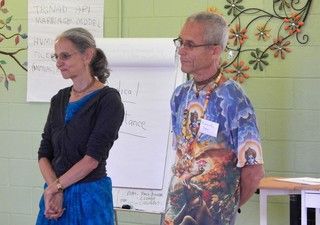
I can't believe it has been a month since I posted. Time flies when you are busy. Part of the reason I haven't posted is that readership is down on my blog, which could be for so many reasons. While I am not discouraged in my life in general, I was from posting here. Unfortunately I tend to take this personally as I put so much of my self in my writing and my sharing is very autobiographical. Regardless, this is a good exercise in not being attached to the results and remembering the mood of giving service to Krishna, my gurus, and the Vaishnavas--and regardless, I still have to write, so I might as well keep posting here.
So much as happened in my life, and so many different emotional states, in those 4 weeks and a day! After I finished my 31 day bodily cleanse of my various organs I felt disassociated from life and had to regroup and recommit to my life mission--which is the subject of this short blog poem--and my wife and I helped facilitate the Grihastha Vision Team 4th Annual Couple's Retreat in Gita-nagari PA. I wrote and thought a great deal about my life, and the value of keeping death in mind. I realize I've already written a lot about it, but as I share in this poem, my tendency is to forget the urgency of my spiritual life, in my case, when my health seems to be getting better.

I must continually remember that I will die
perhaps today or tomorrow, but soon
because if I forget this truth
I return to complacency and the easy life—
this has happened to me, yet again...alas!!
I must recommit to spiritual life, continually.
Otherwise I may die distraught and resentful
which I have been shown by cancer’s mercy.
Monday, October 3rd, 2016
→ The Walking Monk
Sunday, October 2nd, 2016
→ The Walking Monk
“How to meditate more effectively, especially in dealing with the mind?”
Does spiritual life begin only after initiation
→ The Spiritual Scientist
Answer Podcast
Download by “right-click and save content”
The post Does spiritual life begin only after initiation appeared first on The Spiritual Scientist.
How can we share bhakti with atheists who are nature-conscious and are relatively in the mode of goodness?
→ The Spiritual Scientist
Answer Podcast
Download by “right-click and save content”
The post How can we share bhakti with atheists who are nature-conscious and are relatively in the mode of goodness? appeared first on The Spiritual Scientist.
When Krishna is the protector of cows, how are so many cows being slaughtered?
→ The Spiritual Scientist
Answer Podcast
Download by “right-click and save content”
The post When Krishna is the protector of cows, how are so many cows being slaughtered? appeared first on The Spiritual Scientist.
How is rationality correlated with the mode of goodness?
→ The Spiritual Scientist
Answer Podcast
Download by “right-click and save content”
The post How is rationality correlated with the mode of goodness? appeared first on The Spiritual Scientist.
How to respond to people who say their religion is the only way?
→ The Spiritual Scientist
Answer Podcast
Download by “right-click and save content”
The post How to respond to people who say their religion is the only way? appeared first on The Spiritual Scientist.
When thoughts distract us while chanting, how to respond?
→ The Spiritual Scientist
Answer Podcast
Download by “right-click and save content”
The post When thoughts distract us while chanting, how to respond? appeared first on The Spiritual Scientist.
Sacinandana Swami: Srila Prabhupada received the rose each one…
→ Dandavats

Sacinandana Swami: Srila Prabhupada received the rose each one of us offered him. He gave another rose back to us, and he lectured.
While he lectured, like so many of my God-brothers, I felt that Srila Prabhupada was speaking just for me and was looking at me. I felt personally addressed by Srila Prabhupada.
It reminded me of how, when Krishna ate lunch surrounded by His cowherd boyfriends, He communicated to each one of the thousands of them.
Prabhupada’s eyes were wandering over his audience, and sometimes he closed his eyes in deep concentration, but somehow he connected to every one of us.
Then, because I felt so personally addressed by Srila Prabhupada, I put a challenging question to him.
Foolish as I was, I wanted to test Prabhupada to see if he was really the perfect spiritual master I could surrender to for my whole life.
Such surrender would have serious consequences as far as money and my position in life were concerned.
Since my mind was not spiritually developed, to see how Prabhupada would react I asked a question which I felt he could not answer.
I said, “If God is all good, why did He create this maya which inflicts suffering upon the living entities?” Prabhupada looked at me and requested Shyamasundar to repeat the question.
Shyamasundar had not heard my question, maybe due to my accent, and I repeated it. Prabhupada again asked for the question to be repeated.
I became insecure, but I again asked, “You say God is all good. It can’t be because He has created maya, which is certainly not all good. So either He is not all good or maya is no longer under His control and makes us suffer against the good intentions of God.”
Prabhupada looked at me intently and then said, “Krishna has not created maya, you have created maya.” I was startled.
Philosophically I couldn’t understand what he was saying—I created the whole material world? I could not even create a house because at that moment I was insolvent.
Later I understood his explanation, but at the time all I understood was that Krishna was not at fault for my situation. I was at fault. I thought,
“What a brilliant answer. I have understood the point. I better surrender to Krishna and Srila Prabhupada,” who seemed to be very close with the Lord.
It was my first memorable encounter with Srila Prabhupada and he had demolished, like a sadhu always does, my concept that I could challenge him.
And besides answering my foolish question, he effected a transformation in my heart.
In London, while all the devotees were taking breakfast prasadam and the temple room was empty, Srila Prabhupada went to the temple alone to take darshan and pray to the Deities. After a long time he returned to his room.
In the morning I washed Sri Sri Radha-London-Isvara’s dishes and at that time I was in turmoil. I thought, “What will be the consequences of my decision to surrender?”
My fiancīe had come to convince me to take up my old ways and my dying grandfather had requested me to come to his deathbed so he could ask me to give up Krishna consciousness.
My family tradition was that you had to agree to the wish of a dying man, but I could not agree to give up the Lord’s grace upon me. So I stayed in the temple but I did not clean the Lord’s plates well.
One morning as I was washing the plates, absorbed on the mental platform, the temple president came into the kitchen.
His face was red and he stammered, “During Prabhupada’s darshan of the Deities, Krishna told Prabhupada that His plates are not nicely cleansed, that the old offering is still on the plates. Prabhupada said that whoever washes the dishes has to do a good job from now on.”
This woke me from my dreaming state. I had to be responsible. I had been pondering deeply important issues but I had not performed my service correctly and Krishna had complained to Srila Prabhupada.
Besides Krishna, only the cook, who put the new offering on the plates, could know that the plates were dirty.
But the cook was too fast—he put the new offering on hurriedly, without looking at the plates.
Then the dirty plate was covered and only the person who ate the offering could know that the plate was dirty.
It was that Person, Lord Krishna, who had detected this and He had told Srila Prabhupada. I was moved.
And I was also happy that there was a direct connection between Srila Prabhupada and Lord Krishna. I became more inspired to surrender my life to Srila Prabhupada.
On a morning walk in Amsterdam we passed many sleeping hippies and Prabhupada commented on them.
Finally we came to a tree with a nest that had a little bird that was just about to fly.
The bird was a little doubtful if he should fly or not, but Prabhupada encouraged him and finally the bird more or less tumbled down but with some idea of how to hold his little wings.
Prabhupada turned to us and said, “How does the bird know how to fly?” “Instinct, Prabhupada,” said someone who wanted to represent the modern scientists.
Prabhupada immediately said, “That is just a name. The Lord as Paramatma is in the heart of the bird directing him to fly.”
Whatever Prabhupada saw, even a little bird making his first attempt to fly, he connected to Krishna. That was especially visible during morning walks.
My father was angry that Prabhupada had stolen his son and at a public program he confronted Srila Prabhupada.
My father said, “It is not responsible to bring the Indian culture into Germany. It’s as irresponsible as taking a crocodile from Egypt to the cold Rhine River. Just as the crocodile cannot survive there, so the people who are with you now will not be able to stay.”
Prabhupada must have understood that this man was the father of one of his disciples and he took up the challenge. He said, “You can become Krishna conscious in a suit and tie.”
My father thought, “This answer is too simple for my intellectual challenge.”
But the pure devotee’s words do not necessarily act on the intellectual or mental platform that the question came from. They have a transformative shakti which works on a much deeper platform.
From Prabhupada’s answer my father understood that Krishna consciousness was more than externals. It was not a matter of Indian culture—one didn’t have to dress according to the Indian culture.
The Germans are used to tough discussions and in the end my father thought, “What a pleasant encounter. My son is in good hands. This spiritual leader is a sensible personality.”
I was very grateful to Srila Prabhupada for solving a difficult family issue.
Our temple leader had made a big poster with Prabhupada’s picture and in big letters “DER FŪHRER,” in small letters “of the International Society for Krishna Consciousness” and in big letters “KOMMT.”
Anyone would read “DER FŪHRER KOMMT,” the fūhrer comes, reminding them of someone totally lacking divine qualities.
People drew little moustaches on the posters under Srila Prabhupada’s nose. It was an example of how Prabhupada’s disciples did not always serve his preaching mission well.
Srila Prabhupada had a few hostile elements in the audience, probably in part due to the unintelligent advertising.
One particularly disturbed man said, “The chanting is mass self-hypnosis,” maybe remembering Hitler’s influential and passionate speeches.
Prabhupada kindly said, “It is not self-hypnosis, it is self-purification.”
Prabhupada was so expert that with a few words he could alter the consciousness of those who heard him.
—Sacinandana Swami
Excerpt from “Memories-Anecdotes of a Modern-Day Saint”
by Siddhanta das
When bad thoughts trouble us during our bhakti practice, how to respond?
→ The Spiritual Scientist
Answer Podcast
Download by “right-click and save content”
The post When bad thoughts trouble us during our bhakti practice, how to respond? appeared first on The Spiritual Scientist.
Does scripture say that spiritual life doesn’t begin till we are initiated?
→ The Spiritual Scientist
Answer Podcast
Download by “right-click and save content”
The post Does scripture say that spiritual life doesn’t begin till we are initiated? appeared first on The Spiritual Scientist.
What happened after the battle of Kurukshetra? (Audio files)Let…
→ Dandavats

What happened after the battle of Kurukshetra? (Audio files)
Let Nirantara prabhu narrate you the following events in a profess...
The contraversies that arise in Vaisnava history
→ SivaramaSwami.com
Caitanya-caritamrta class.
The post The contraversies that arise in Vaisnava history appeared first on SivaramaSwami.com.
ISKCON Scarborough – HG Chaitanya Charan das will be giving classes coming Saturday and again on Monday!
→ ISKCON Scarborough
Please accept our humble obeisances!
All glories to Srila Prabhupada!
All glories to Sri Guru and Sri Gauranga!
We are extremely happy to inform you that HG Chaitanya Charan das will be giving 2 special classes at ISKCON Scarborough (3500 McNicoll Avenue, Unit #3, Scarborough,Ontario,Canada) and his schedule at ISKCON Scarborough is as follows:
Saturday - October 8th, 2016:
Topic: Learn to relish Rasa
Time: 7.30 am to 9 am
Monday - October 10th, 2016: (Thanksgiving holiday)
Seminar topic: "Matters that matter more than matter"
Time: 6.30 pm to 8.30 pm
Wonderful prasadam will be served after both the programs.
We humbly welcome you and your family to ISKCON Scarborough on Oct 8th and 10th to have the wonderful association of HG Chaitanya Charan das prabhu.
About HG Chaitanya Charan das:
Chaitanya Charan is a monk and spiritual author.
He has done his Electronics & Telecommunications Engineering from the Government College of Engineering, Pune. He subsequently served as a software engineer in a prominent multinational software corporation. He also secured 2350 out of 2400 in GRE, gaining the top rank in Maharashtra.
Seeing the prevalent problems of stress, depression, addiction, and overall misdirection – all caused by a lack of spirituality – he felt inspired to dedicate his life to the cause of sharing the spiritual wisdom of the Bhagavad-gita under the aegis of ISKCON (International Society for Krishna consciousness).
He is a member of ISKCON’s leading intellectual body, the Shastric Advisory Council, and is the associate-editor of ISKCON’s global magazine, Back to Godhead.
He is the author of the world’s only Gita-daily feature, wherein he writes daily a 300-word inspirational reflection on a verse from the Bhagavad- Gita. Till now he has written over seventeen hundred Gita meditations that are posted on www.gitadaily.com and are read through daily feeds by thousands from all over the world.
He also answers questions by seekers on his site www.thespiritualscientist.com, where his over three thousand five hundred audio answers and several hundred articles are available.
He travels all over the world from Australia to America, giving talks on spiritual subjects in temples, universities and companies.
His articles have been published in many national newspapers including Indian Express, Economic Times and Times of India in the Speaking Tree column.
His writings in English have been translated into several foreign languages including German, Chinese and Romanian and several Indian languages including Kannada, Telgu, Bengali, Hindi and Marathi.
He is the author of sixteen books:
ENERGY – Your Sutra for Positive Thinking
Science and Spirituality; The Spiritual Scientist series, volumes 1
Science and Spirituality; The Spiritual Scientist series, volumes 2
Recession – Adversity or Opportunity?
Why do we need a temple?
Frequently Unanswered Questions
Idol Worship or Ideal Worship?
The Gita for Daily Enrichment
Oh My God! Re-answering the Questions
My Little Bhakti Companion
Timeless Insights on Today’s Issues
10 Leadership Sutras from Bhagavad-gita
GK for PK!
Prabhupada: The moments that made the movement
The Eye to see the I: 121 reflections on Bhagavad-gita
Belong: 121 reflections on Bhagavad-gita
ISKCON Scarborough
3500 McNicoll Avenue, Unit #3,
Scarborough,Ontario,
Canada,M1V4C7
Email Address:
iskconscarborough@hotmail.com
website:
www.iskconscarborough.com
Additional Finishing Construction work from the month of September
- TOVP.org
Bronze Ornamentation Samples
Our very creative Manufacturing Process Engineer, Savyasachi Prabhu, wanted to observe the color possibilities of different bronze alloy compositions. The experiment was created to see how the composition colors will look for the ornamentation of the TOVP architecture, coating of the demigod sculptors, and other artistic projects.
The compositions were made in the Glass fiber Reinforced Concrete (GRC) Factory. The alloys tested were nickel-aluminum bronzes.
One alloy formula is that which is used for dental implants and resemble a gold color. The second formula is one that is used for making monetary coins from various countries.
Both samples look great when they are polished. We are very pleased with the results. The first two images are of the samples we created. The image of Sri Hanuman gives us an idea what the bronze formula will look like when applied to our artisan work.
Demigod Sculptures
After a year of dedicated work and co-creativity, we are reaching a great milestone in our Art department. The artists have been creating 8 sculptures of chosen demigods and associates of the Lord.
The demigods that we have sculpted are Lord Brahma, Lord Shiva, Lord Indra, Sri Lakshmii Devi, Manu, and Garuda. Currently we are finishing the last two Vaikuntha associates, Nanda and Sunanda.
Once completed, the sculptures will be placed in Lord Nrsimha’s Dome. The 8 Demigods and the Lord’s associates will fill the circumference on the second gallery level of Lord Nrsimha’s Dome. They are all in the mood of fear and submission because they have never seen Lord Nrsimha this ferocious. They will be facing Lord Nrsimha because they have come to witness His pastimes and offer their humble obeisances.
After this project is completed, the artists will then begin sculpting the Guru parampara that will go on the leftmost altar in the Main Dome.
The First Cornice is Installed
We have reached a new level of work in our external ornamentation of the TOVP. We installed our first decorative cornice. The cornice was installed above a pillar’s capitol.
We are decorating the outside of the temple in a systematic order. We work on one section at a time on one level that goes around the whole temple. Once the pattern is completed, we then move up vertically to the next section. We will do this until the whole outside of the temple is decorated from the top to the bottom.
Thus, the entire outer circumference of the TOVP will be decorated with cornices in a linear fashion. Once this is complete, we will then go up above the cornice to the next level of white marble and sandstone work. On that new level, then the same white marble and sandstone pattern that was applied before will be repeated in the new location.
The TOVP’s New Hoist
Recently we have integrated another new Jaypee Hoist into our construction work. This new hoist can very sufficiently lift workers and an abundance of materials together.
It is assisting us and making our construction quicker and easier. It is creating an easy flow for us to lift up an abundance of materials at anytime constantly, without any stoppages. This new hoist has upgraded our construction logistics, and thus has made TOVP high tech.
Plastering on the TOVP
The beautification of the TOVP is set into full motion now. We are currently plastering all of the TOVP’s outer walls, including the walls under the Domes.
Once this is completed we will then begin the cladding of the white marble.
The workers are using our wonderful new hoist to keep their work simple and safe. Using this hoist is a remarkable alternative for scaffolding and is making our construction smarter, more cost efficient, and is saving us time.
The Chatri Peacock Work Continues
The TOVP has 8 roof top Chatris. Each Chatri will be beautifully ornamented with pillars, cornices, and peacocks. The peacocks have been hand crafted in the Glass fiber Reinforced Concrete (GRC) Factory. Each Chatri will have 12 peacocks installed above the pillars.
The peacock is a symbol of beauty, prosperity, royalty, love, compassion, soul and peace. It is a magnificent bird that displays it’s beautiful plumage for all to see. Its iridescent plumage is remarkable and stunning. Peacocks are pure of heart. They pair with one mate and are loyal and faithful to their partners. To many, they also symbolise eternal love.
Currently, we are decorating our first Chatri with peacocks. This Chatri is located close to Lord Nrsimha’s Dome.
After we finish nicely decorating this Chatri, we will then do the electrical work. All of the pillars will have lights installed, and thus the peacocks will be illuminated to allow their glorious beauty to shine.
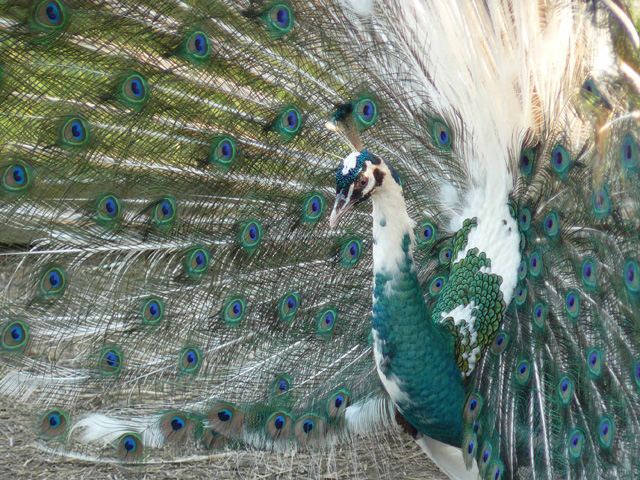
The post Additional Finishing Construction work from the month of September appeared first on Temple of the Vedic Planetarium.
Iskcon 50: Message from the EO (Executive officer –…
→ Dandavats

Iskcon 50: Message from the EO (Executive officer – appointed by the Government of Andhra Pradesh) of the TTD = Tirumala Tirupati Devastaanams - the managing authority for the Tirupati “Balaji” (Srila Prabhupada told us – I visited Tirumala with him during April 1974 - for a brief 3 day visit - that “Balaji” means “Baal Krishna”, that is Lord Krishna’s childhood [baal] form.) temple - India’s most visited and wealthiest Hindu temple, congratulating ISKCON on ISKCON’s 50th anniversary.
Tirupati is located 150 kilometers North of Chennai (Madras) in Andhra Pradesh, South India. It can be reached by flight (only via Hyderabad or Vijayawada – there was - not sure if there still is a hopping flight from New Delhi via Hyderabad), or by rail or road






